Browse Exhibits (8 total)
Jewish Greek Life at University of Kentucky (UK) 1960-1969
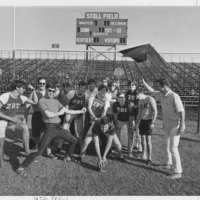
This is a brief history on the fraternity Zeta Beta Tau (ZBT), one of University of Kentucky's only existing Jewish fraternities. In this exhibit, you will learn what the organization was like many years ago that people of today's generation would not already know. The timeline starts from 1960, and ends in about 1969. You will notice many things from this time-period that will look a little different from the present due to different eras and movements that took place (ex: Beatnik and Twist Parties). You will learn about all kinds of activities that were present in the 1960s that are no different than what other fraternity organizations offer today. These activities included formals, parties, house chores, and outdoor work (landscaping). Other activities involved student-run bicycle races and push cart derbies. One other thing you will notice that may have been different during this time is the fraternity's use of a housemother to keep everyone and everything in check, which is not very popular today. There are many other insights that I am sure will interest you as you view this exhibit. Feel free to look more into what it was like being a member of ZBT all those years ago.
Oral History Lesson Plan for High School Instructors: How has Jewish life in Kentucky changed across generations?

My final exhibit is a lesson plan aimed to teach high school seniors about research, oral histories, Jewish life and practices, and how to work collaboratively. My lesson plan is comprised of 8 lessons. The whole unit lasts about a week and a half. The students start out by learning about Jewish life and practices and about Jewish Kentucky using readings from our class as well as the oral histories provided by the Nunn Center. From there, students learn about the strengths and weaknesses to oral histories, how to research, and finally being introduced to the final project/presentation. The final presentation (where I will assess what the students have learned about Jewish life, oral histories, and proper research) requires students to pick an aspect of Jewish life that we have been discussing in class, research this topic, listen to oral histories related to this topic, and present to the class about how this practice has changed across generations and specifically in Kentucky. Students will have to consider cultural context and historical background when determining how this practice has changed across generations. Topics students can choose from include Kosher eating, holiday celebrations, Bar/Bat Mitzvahs, Jewish stereotypes, persecution, entrepreneurship, Israel, and women’s rights. Students will use the oral histories from the Jewish Kentucky collection as basis for their research. I will provide them with an oral history to begin with (past generation practices). Then students must do outside research about their topic and find another oral history to complement their research. Students will present their findings to the class in groups of 4.
Unit Plan: The Merchant of Venice, Identity, Oral History, and Jewish Kentucky
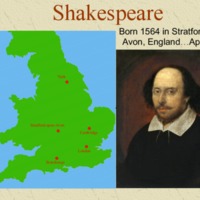
This is an English unit plan for high school, specifically the junior and senior levels. This unit covers William Shakespeare's The Merchant of Venice along with samplings of his other texts, how to read him, and themes to be considering when reading The Merchant of Venice or any of his other works.
Also in this unit is material briefly covering Jewish history in Europe and brief introduction to the stereotypes used against Jews from the Middle Ages to the prseent. To accompany this is an oral history from Jeff Kaplan, a Jewish businessman in Lexington, Kentucky along with an assignment focusing on an oral history from Max Shapira.
The goal of this lesson is to use Shakespeare as a springboard not only into poety and English literature, but also into the issues of Jewish history, identity, and to give students a taste of Jewish Kentucky. Jews represent a small, but vital part of Kentucky society that many students are unaware of.
Students will be inspired to explore deeper issues of identity, Judaism, Shakespeare, and to seek out and undertand the accomplishments of Jews in Kentucky. They will also, through their study of oral history, conduct their own oral history.
Temple Adath Israel (Lexington, KY) Images from years 2003 & 2015
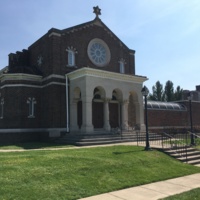
This exhibit contains photos from Temple Adath Israel located in Lexington, KY. Most of the photos included in this exhibit are from the Temple's 100th Anniversary Committee Meeting on April 24, 2003. The photos depict the numerous committee members during their yearly committee meeting. In addition to these, we have included images of the Temple itself, Rabbi David Wirtschafter and his children Zachariah Sippy Wirtschafter and Emmanuelle Sippy Wirtschafter during a religious ceremony in 2015. We chose these specific images of the committee members to highlight their commitment and passion for Temple Adath Israel. This exhibit is in honor of the committee members of Temple Adath Israel during the 100th Anniversary on April 24, 2003. We have also chosen to include select photos from the "Holocaust Slides," that were found in the Temple Adath Israel files.
Student-authored Podcasts
This exhibit features final collaborative, student-authored audo essays generated for WRD 112 in Spring and FAll of 2017.
Unit Plan-Teaching Holocaust Literature with Oral History

Our final exhibit is intended for high school English teachers teaching their classes about personal accounts of the Holocaust. The main source of literature for this unit is Night by Elie Wiesel. We incorporated activities to encourage students to learn more about the Holocaust and to contextualize survivors' narratives of this horrific event. This Unit Plan also incorporated John Rosenberg's oral history from Arwen Donahue's This is Home Now: Kentucky's Holocaust Survivors Speak as an additional account for the students to reflect on. We aimed to compare and contrast a survivor's written account with a survivor's oral account of Holocaust survival.
Raising Awareness About Jewish Conversion In Kentucky
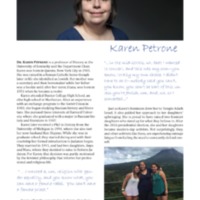
I am raising awareness and understanding about the process of conversion to Judaism. My exhibit is centered around interviewees who are associated with the Lexington and Louisivlle, KY Jewish community. These members have volunteered their time and effort to explain how conversion has influenced their lives within the Jewish community of Kentucky. The exhibit centers around specific audio clips of members that mention conversion in their Oral History Interviews. There is also archived material from the Temple Adath Israel Records from the University of Kentucky Libraries Special Collections Research Center that exemplify data about conversion and interfaith marriage.
I became interested in Jewish conversion because I question religion quite often. Converts Kathy Grossman and Karen Petrone mention their conversion based on pesonal beleif and feminism- two major components of their reasoning to convert to Judaism. The Jewish faith does not seek converts and those wanting to convert must study on their own time and with a Rabbi in order to fully undertand Judaism. The interviews I have in my exhibit center around a handful of couples whose partners have converted to obtain a united religious forefont for their future.
Lesson Plan: Understanding Systematic Dehumanization of Jews and Their Resistance During the Holocaust
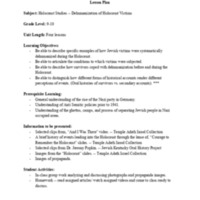
This lesson plan is intended for high school students. It offers a brief history of the Nazis' rise to power in Germany and the party's antisemetic policies. Using primary source photographs and survivor accounts, as well as excerpts from an interview with Dr. Jeremy Popkin, the lesson aims to provide a comprehensive understanding of how Jews in Europe were systematically dehumanized during the Holocaust. The unit also offers insight as to how Jews coped with their conditions, and how theirs is a legacy of remembrance and education.